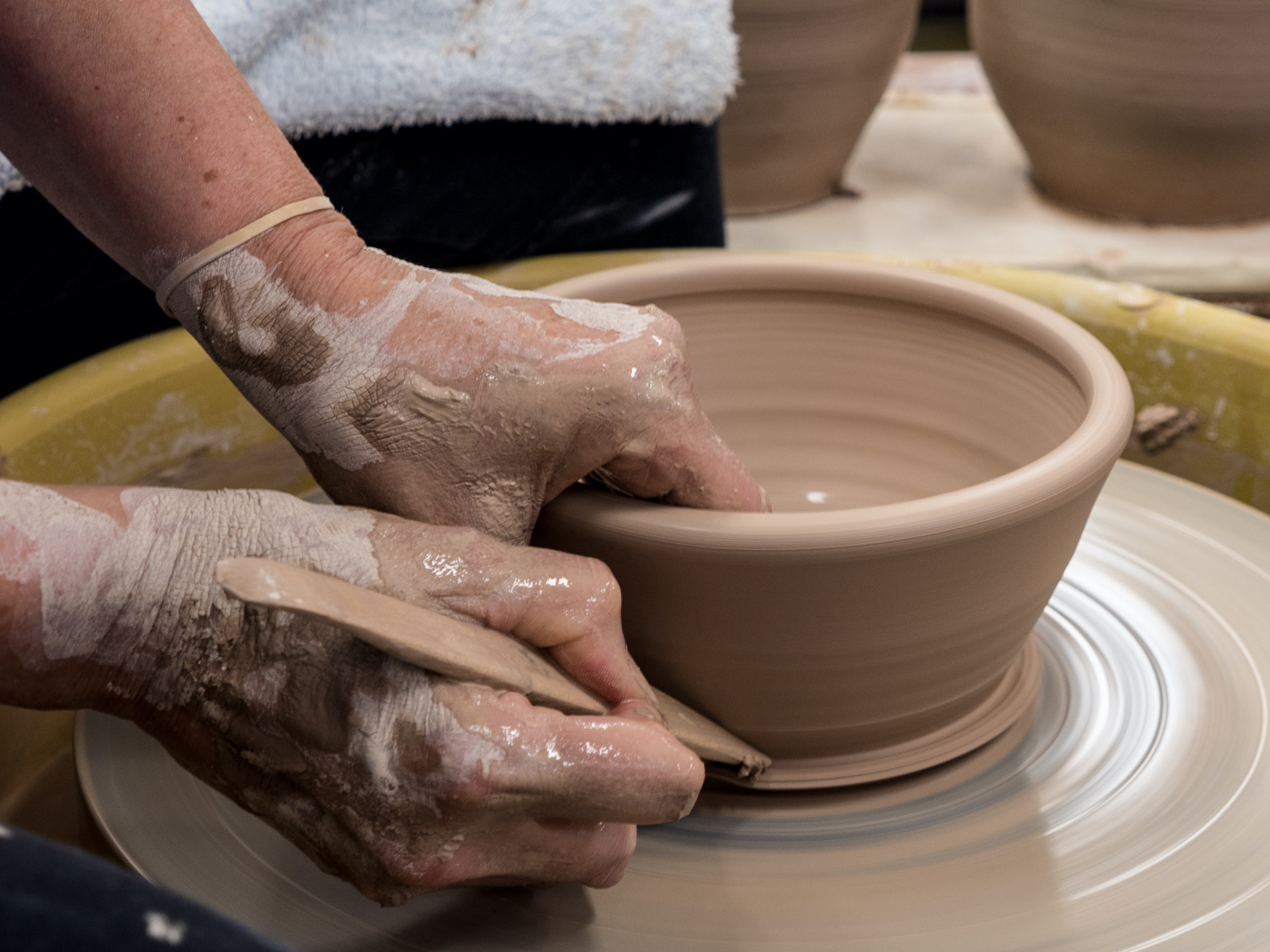
c/o Mark Loper
Wesleyan Potters, a non-profit craft school and artist co-op, is the oldest craft school in Connecticut. But contrary to the name, the collective does not have any affiliation with the University. According to their website, Wesleyan Potters was founded in 1948 when a group of women affiliated with the University wanted to learn more about the art of pottery. A Wesleyan art professor taught a few courses until Mary Kring Risley, a notable ceramicist whose husband worked at the University, took over.
Throughout the years, the Potters has changed locations many times, moving to its current location at 350 South Main St. in 1970. The group has also grown in size and the number of classes offered; however, the community is just as strong. The school offers classes in ceramics, jewelry making, weaving, and boasts a small gallery shop. The classes are small enough that each person can receive individual instruction from the teachers, and if a student has a project they want to work on, most of the time they can follow their own curriculum.
Wesleyan Potters is currently run by Director Liz Blodgett. After traveling around the world looking for art education jobs, Blodgett ended up back in the U.S. looking for her next step. She came to Wesleyan Potters on a first date with her now-husband and immediately felt at home. A couple of months later, she came across a job advertisement for Wesleyan Potters. The community at Wesleyan Potters led Blodgett to instantly accept the part-time job offer. Twelve years later, she took on the job as Director of the Potters.
“It just felt right,” Blodgett explained. “My little thing that I said to myself when I took this job was, ‘I want to open doors wider.’”
Over the years, while the Potters’ community has grown and strengthened, most of their historic connection with the University has been lost. While some students have taken classes with the Potters, their classes often fall during Winter Break when students are not on campus.
Blodgett explained that she wants to connect with students directly to work on bridging the gap between the Potters and Wesleyan. By aligning schedules and creating ways for students to travel back and forth from the Potters, Blodgett hopes to increase the student presence at the studio. To her, re-opening the bond between the University and Potters by coordinating schedules and communicating more would create countless new opportunities for students.
“The bulk of the organization are people who volunteer their time…. That’s how this place is successful,” Blodgett said. “We are one of very few craft organizations that has never had to close its doors to reorganize. That’s really a tribute to the membership.”
Melissa Fry has been a weaving member of the Potters since 1981. Fry explained that she was new to weaving when she came to the Potters.
“I fell in love with [weaving],” Fry said. “I like that things are clean and dry and I have fun playing with colors, which you can really do with weaving. In weaving, it takes a long long time because you have to set up each grid, you have to thread it on the loom, and then you have to weave it. Some projects can take a few days, but some can take months.”
Adam Hart, a Key Member of the Potters—a title given to long-time members—got involved as a child. He serves on multiple committees for the Potters, including maintenance, the fundraising committee, and the Executive Board of Directors. Hart primarily creates wearable jewelry, specifically showpieces through which he can present his skill.
“They’re necklaces, they’re big, they’re elaborate,” Hart said. “I actually took kids classes here when I was young…. There’s some really cool people that are members here, and you get that camaraderie working with like-minded people.”
During COVID-19, Wesleyan Potters only fully shut down for two months. They began opening up incrementally, looking specifically at each space and figuring out how to open up in the safest way possible.
“We were cautious, measured, but always with an eye on opening up,” Blodgett explained. “We had a really intense cleaning protocol because so many of our folks fit the parameters of the really vulnerable. Those folks are the walking encyclopedias of not just the institutional knowledge here but the jewelry knowledge, the pottery knowledge, the weaving knowledge. So we really learned: people first. It was always people first.”
Now, Wesleyan Potters is almost fully open. Their classes are still operating at a smaller capacity than before the pandemic, but more people are able to come in now than ever before, especially thanks to the vaccine. While Blodgett wants to return to full capacity, she also enjoys the smaller class sizes and individual experiences it helps foster.
The connection between the University and the Potters has been lost for many years, but that doesn’t mean it can’t be found. Through aligning schedules and brainstorming with students, Blodgett hopes to foster a connection again. Much like the University, the community is what makes the Potters a remarkable place.
“I don’t want to sound like an advertisement, but it really is a unique facility,” Hart said. “There are other places that are similar, but Wesleyan Potters is definitely special.”
Maya Gray can be reached at mgray@wesleyan.edu.
Comments are closed